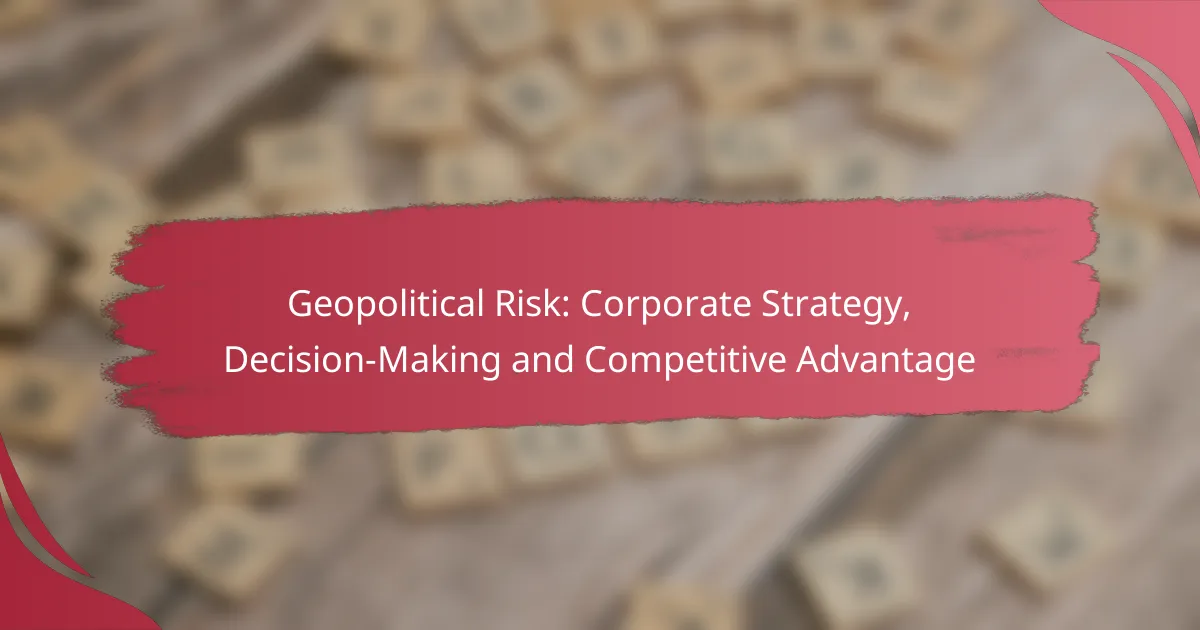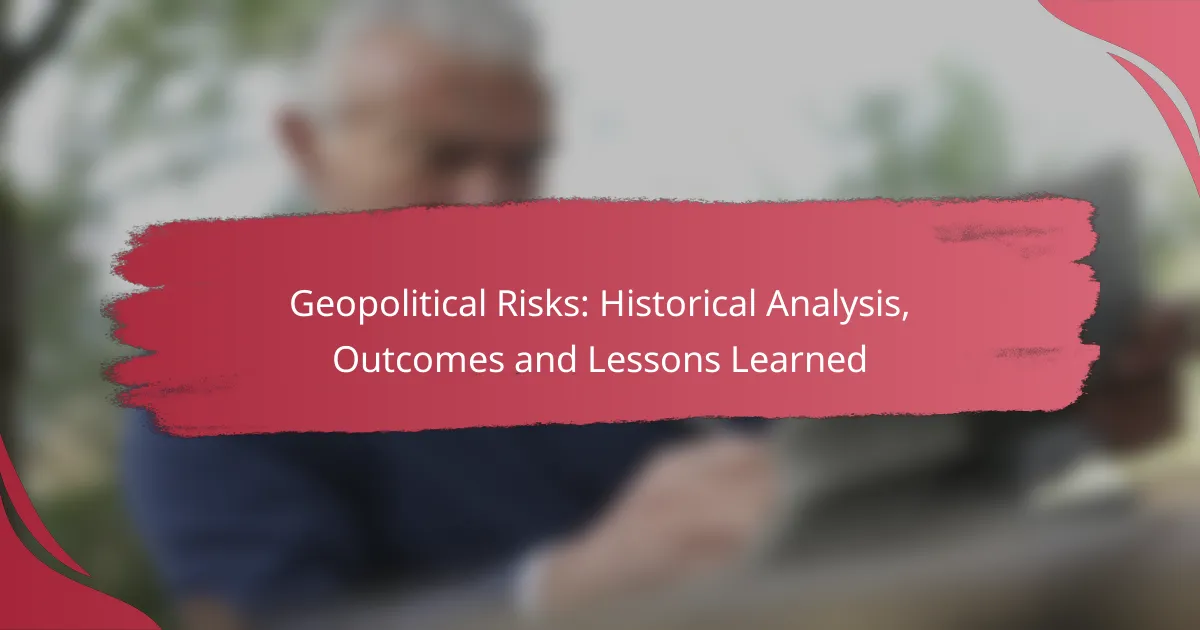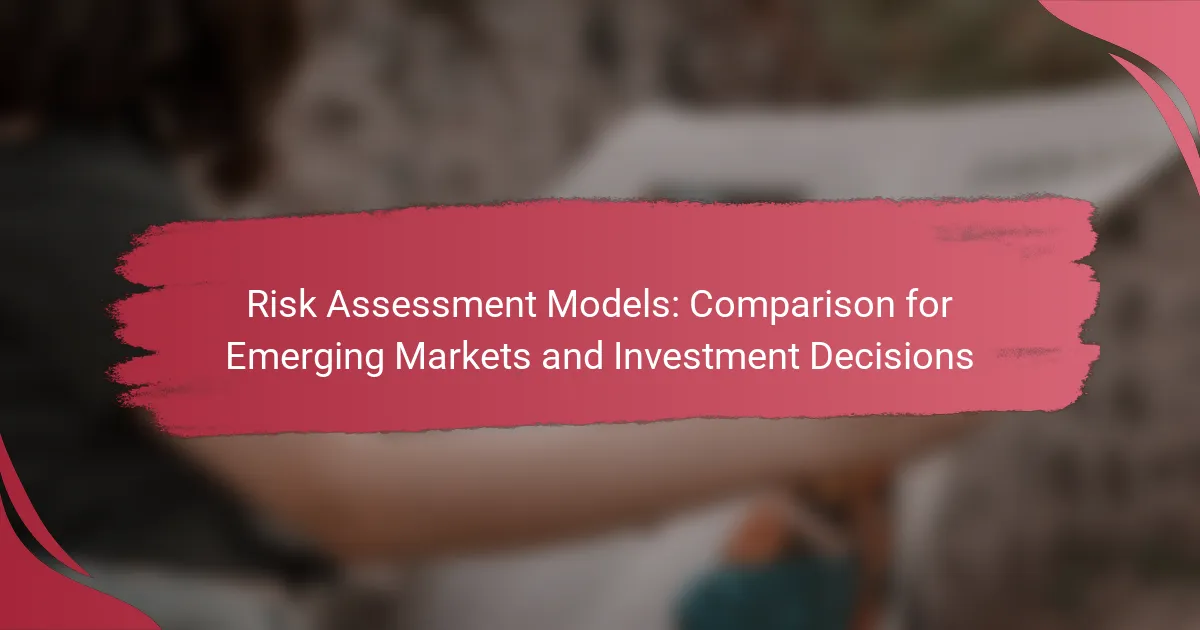Geopolitical risk plays a crucial role in shaping corporate strategy, influencing key decisions regarding market entry, supply chain management, and investment. By systematically evaluating potential disruptions, companies can adopt proactive strategies such as scenario planning and market diversification to navigate uncertainties and sustain their competitive advantage in an ever-changing global environment.

How Does Geopolitical Risk Affect Corporate Strategy?
Geopolitical risk significantly influences corporate strategy by shaping decisions related to market entry, supply chain management, and investment approaches. Companies must assess these risks to navigate uncertainties and maintain competitive advantages in a volatile global landscape.
Impact on market entry strategies
Geopolitical risk affects market entry strategies by determining the feasibility and timing of entering new regions. Companies must evaluate political stability, regulatory environments, and potential trade barriers before committing resources.
For example, a firm considering expansion into Eastern Europe may face different challenges compared to entering Southeast Asia, where regulatory frameworks and political climates vary widely. Conducting thorough market research and risk assessments can help identify the most promising opportunities.
Influence on supply chain decisions
Supply chain decisions are heavily influenced by geopolitical risk, as companies must consider the reliability of suppliers and logistics in various regions. Disruptions due to political unrest or trade disputes can lead to delays and increased costs.
To mitigate these risks, businesses often diversify their supplier base across multiple countries or regions. For instance, a manufacturer might source components from both Asia and Europe to reduce dependency on a single market and enhance resilience against geopolitical shifts.
Effect on investment strategies
Investment strategies are shaped by geopolitical risk as companies weigh potential returns against the likelihood of instability in target markets. High-risk regions may require higher expected returns to justify investment, while stable areas might attract more conservative capital allocations.
Investors should conduct scenario analyses to understand how geopolitical events could impact their portfolios. For example, investing in emerging markets may offer growth potential but comes with increased volatility, necessitating a careful balancing of risk and reward.
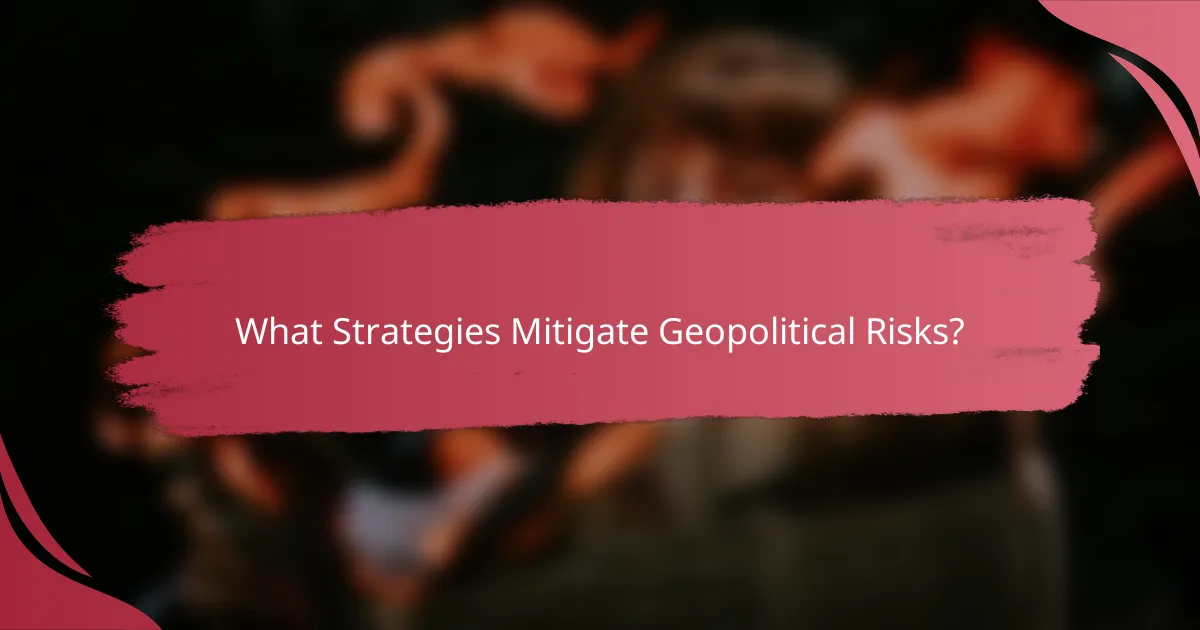
What Strategies Mitigate Geopolitical Risks?
To effectively mitigate geopolitical risks, companies can adopt strategies such as scenario planning, market diversification, and forming local partnerships. These approaches help organizations anticipate potential disruptions and adapt their operations accordingly.
Scenario planning techniques
Scenario planning involves creating detailed narratives about possible future events that could impact a business. By considering various geopolitical scenarios, companies can identify vulnerabilities and develop contingency plans. This proactive approach allows organizations to respond swiftly to changing circumstances.
When implementing scenario planning, businesses should focus on key factors such as political stability, economic conditions, and regulatory changes in relevant regions. Regularly updating these scenarios ensures that the strategies remain relevant and effective.
Diversification of markets
Diversifying markets reduces dependence on any single region, thereby lowering exposure to geopolitical risks. By operating in multiple countries or regions, companies can spread their risk and maintain stability even if one market faces turmoil.
To effectively diversify, businesses should evaluate potential markets based on factors like economic growth, political climate, and cultural compatibility. A balanced portfolio across different regions can provide a buffer against localized disruptions.
Building local partnerships
Establishing partnerships with local firms can enhance a company’s resilience to geopolitical risks. Local partners often have better insights into the political and economic landscape, which can inform strategic decisions and operational adjustments.
When forming partnerships, it is crucial to choose reputable and reliable local entities. Companies should also consider joint ventures or alliances that align with their strategic goals, as these can facilitate smoother navigation through regulatory environments and cultural nuances.

How to Integrate Geopolitical Risk into Decision-Making?
Integrating geopolitical risk into decision-making involves systematically evaluating potential political, economic, and social disruptions that could impact business operations. Companies must adopt a proactive approach to identify, assess, and mitigate these risks to maintain competitive advantage.
Risk assessment frameworks
Risk assessment frameworks provide structured methodologies for identifying and evaluating geopolitical risks. Common frameworks include the PESTLE analysis, which examines Political, Economic, Social, Technological, Legal, and Environmental factors, and the SWOT analysis, focusing on Strengths, Weaknesses, Opportunities, and Threats.
When applying these frameworks, companies should prioritize risks based on their likelihood and potential impact. For instance, a firm operating in Eastern Europe might assess risks related to regional instability or trade regulations, categorizing them as high, medium, or low priority.
Incorporating geopolitical analysis
Incorporating geopolitical analysis into corporate strategy involves continuous monitoring of global events and trends that could affect business operations. This can include tracking political developments, economic sanctions, or shifts in trade policies.
Utilizing tools such as scenario planning can help businesses prepare for various geopolitical outcomes. For example, a company might develop strategies for both a stable and an unstable political environment in a target market, allowing for agile responses to changing conditions.
Stakeholder engagement processes
Effective stakeholder engagement processes are crucial for understanding and addressing geopolitical risks. Engaging with local communities, government agencies, and industry groups can provide valuable insights into potential risks and opportunities.
Companies should establish regular communication channels with stakeholders to gather feedback and share information. This could involve hosting forums, conducting surveys, or participating in industry associations, ensuring that the company remains informed about local sentiments and regulatory changes that could impact operations.

What Role Does Competitive Advantage Play?
Competitive advantage is crucial for companies navigating geopolitical risks, as it allows them to differentiate themselves in challenging environments. By leveraging unique strengths, businesses can better position themselves against competitors and adapt to changing market conditions.
Leveraging local knowledge
Understanding local markets is vital for gaining a competitive edge. Companies that invest in local expertise can anticipate consumer behavior, cultural nuances, and regional trends, which enhances their strategic decision-making. For instance, a multinational firm entering a new market may benefit from hiring local managers who understand the regulatory landscape and consumer preferences.
Additionally, local knowledge can help firms identify potential risks and opportunities that may not be apparent from a distance. This insight allows businesses to tailor their products and services to meet local demands, ultimately increasing their market share and customer loyalty.
Adapting to regulatory changes
Staying compliant with local regulations is essential for maintaining a competitive advantage. Companies must be agile in adapting to new laws, trade agreements, and compliance requirements, which can vary significantly across regions. For example, a business operating in the European Union must navigate strict data protection regulations like GDPR, while firms in the U.S. may face different standards.
To effectively manage regulatory changes, companies should establish a robust compliance framework that includes regular training for employees and updates to internal policies. This proactive approach not only mitigates risks but also positions firms as trustworthy entities in the eyes of consumers and regulators alike.

How to Evaluate Geopolitical Risk in Different Regions?
Evaluating geopolitical risk involves analyzing political, economic, and social factors that may affect business operations in various regions. This assessment helps companies make informed decisions about market entry, investment, and risk management strategies.
Regional risk assessment tools
Regional risk assessment tools help organizations systematically evaluate potential risks in specific areas. Common tools include risk matrices, scenario analysis, and geopolitical risk dashboards that aggregate data from multiple sources.
For example, a risk matrix can categorize risks based on their likelihood and impact, allowing businesses to prioritize their focus. Companies may also use software solutions that provide real-time updates on geopolitical events, helping them stay informed and agile.
Country-specific case studies
Country-specific case studies provide insights into how geopolitical risks have affected businesses in particular nations. For instance, a study of companies operating in Venezuela may highlight challenges such as currency instability and government intervention.
Another example is the analysis of firms in Eastern Europe, where geopolitical tensions can lead to sudden regulatory changes. These case studies can serve as valuable lessons for companies looking to navigate similar risks in other regions.
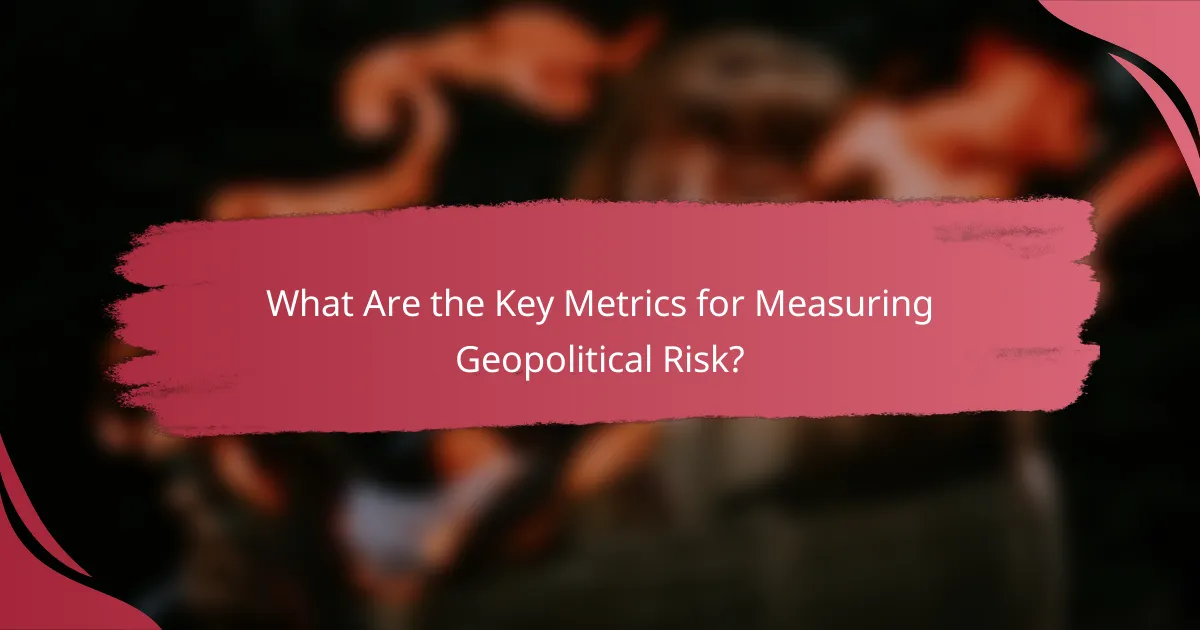
What Are the Key Metrics for Measuring Geopolitical Risk?
Key metrics for measuring geopolitical risk include political stability, economic indicators, and social unrest levels. These metrics help organizations assess potential threats to their operations and inform strategic decision-making.
Political Stability
Political stability is a crucial metric that evaluates the likelihood of government change, civil unrest, or conflict within a country. Companies should monitor political events, such as elections or policy shifts, as these can significantly impact business environments. A stable political climate often correlates with lower risks for investments and operations.
To assess political stability, organizations can use indices like the Political Stability and Absence of Violence Index from the World Bank. A score above a certain threshold typically indicates a favorable environment for business activities.
Economic Indicators
Economic indicators, such as GDP growth rates, inflation, and unemployment levels, provide insight into a country’s economic health and potential risks. A declining economy may lead to increased social tensions and instability, affecting corporate operations. Companies should analyze these indicators regularly to gauge the economic landscape.
For example, a country experiencing high inflation may see reduced consumer spending, impacting sales for businesses. Monitoring these trends can help firms adjust their strategies accordingly.
Social Unrest Levels
Social unrest levels reflect the degree of public dissatisfaction and can indicate potential disruptions to business operations. Factors contributing to social unrest include income inequality, unemployment, and lack of political representation. Companies should track news reports and social media trends to stay informed about potential unrest in regions where they operate.
To mitigate risks associated with social unrest, businesses can develop contingency plans, such as diversifying supply chains or establishing crisis management teams. Understanding the local context and community sentiments can help organizations navigate these challenges effectively.
